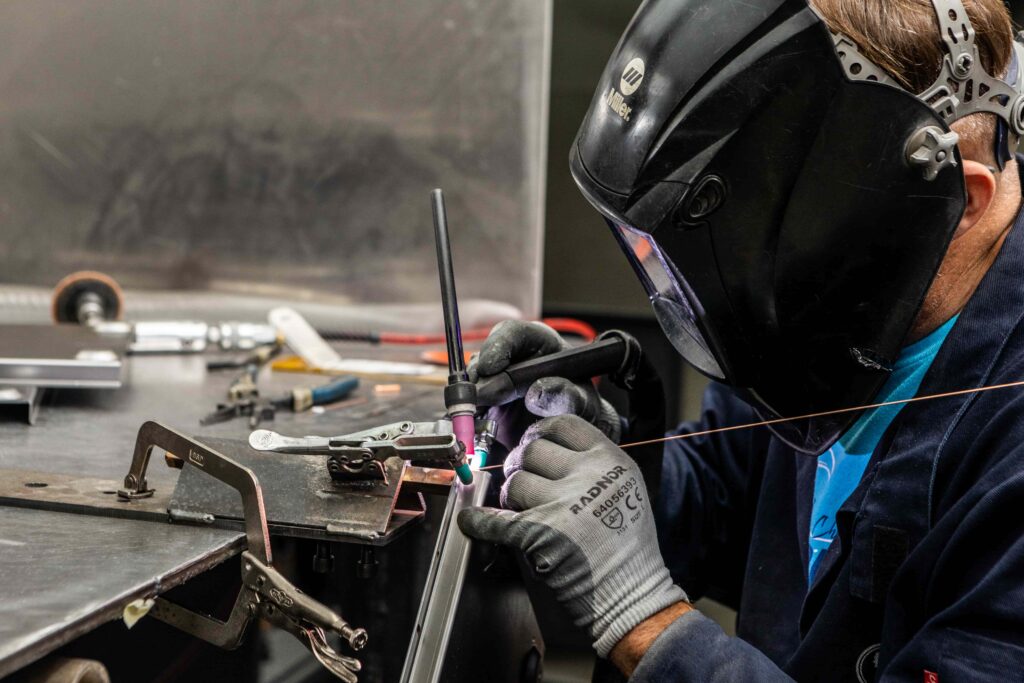Specialized Welding Inspection Service for Pipe Projects
Specialized Welding Inspection Service for Pipe Projects
Blog Article
Recognizing the Different Kinds Of Welding Techniques and Solutions Available

Overview of Welding Methods
Welding strategies include a diverse range of techniques utilized to join materials together permanently. One common technique is arc welding, which entails creating an electric arc in between the base and an electrode product to thaw and fuse them together. This strategy is versatile and can be used with numerous metals, making it among one of the most widely used welding procedures.

Furthermore, TIG welding, or Gas Tungsten Arc Welding (GTAW), is a precise and clean welding approach that utilizes a non-consumable tungsten electrode to produce the weld. TIG welding is commonly utilized for thinner products and provides exceptional control over the welding procedure. On the whole, comprehending these various welding strategies is essential for choosing one of the most appropriate approach for various tasks.
Generally Used Welding Approaches
A range of commonly used techniques are utilized in the field of welding to successfully join products with each other. One of the most widely utilized methods is Gas Steel Arc Welding (GMAW), likewise called MIG welding. This technique utilizes a cord electrode that is fed through a welding gun, together with a securing gas to shield the weld from contaminants airborne. Another usual approach is Protected Metal Arc Welding (SMAW), or stick welding, which utilizes a flux-coated electrode to develop the weld. Tungsten Inert Gas (TIG) welding is favored for its accuracy and convenience, making use of a non-consumable tungsten electrode to generate the weld. Flux-Cored Arc Welding (FCAW) is generally used in commercial settings due to its high welding rate and mobility. In Addition, Immersed Arc Welding (SAW) is perfect for creating deep welds on thick materials. These typically made use of welding techniques cater to different requirements and products, giving choices for various welding applications.
Advanced Welding Services
Structure upon the foundation of generally used welding approaches, the realm of sophisticated welding solutions encompasses innovative techniques and modern technologies that press the borders of precision and efficiency in product joining processes. Advanced welding solutions commonly involve specialized techniques such as laser welding, electron beam of light welding, and rubbing mix welding. Laser welding uses a highly focused beam of light to precisely sign up with steels with minimal heat-affected areas, making it optimal for fragile or intricate elements. Electron light beam welding, on the other hand, employs a high-velocity electron beam of light to produce deep weld penetrations in materials like aerospace alloys or dissimilar metals. Friction mix welding, a solid-state joining procedure, enables the welding of products that are challenging to fuse making use of traditional methods, like light weight aluminum and copper. These advanced strategies offer enhanced control over the welding process, leading to stronger, more resilient welds with lowered distortion and enhanced overall quality.
Specialized Welding Techniques

One more specialized welding technique is laser beam of light welding, where an extremely focused beam is made use of to join metals with minimal heat-affected zones and distortion. This method is typically employed in markets calling for high accuracy best site and sanitation, such as electronic devices and medical device manufacturing. Additionally, explosive welding is an one-of-a-kind strategy that utilizes regulated explosives to bond different metals with each other, producing dependable and solid joints. These specialized welding strategies display the diversity and development present in the area of welding, providing services for a large range of industrial applications.

Selecting the Right Welding Process
Selecting the proper welding process is extremely important in attaining ideal cause metal fabrication and signing up with operations. With different welding techniques available, it is important to consider elements such as the kind of steel, thickness, joint style, and desired end outcome when selecting the best welding process - Welding Inspection Service. Among the typical welding methods are Gas Steel Arc Welding (GMAW), Shielded Metal Arc Welding (SMAW), Gas Tungsten Arc Welding (GTAW), and Flux-Cored Arc Welding (FCAW) GMAW, also referred to as MIG welding, appropriates for welding slim to thick steels and is versatile in numerous positions. On the various other hand, SMAW, or stick welding, her latest blog is a dependable technique for outdoor and area welding because of its mobility and simpleness. GTAW, or TIG welding, is ideal for welding slim More Bonuses products and gives top notch and precise welds. FCAW is liked for welding thick materials and is recognized for its high welding speeds. Recognizing the features of each welding process is vital in selecting one of the most ideal technique for a specific welding task.
Final Thought
Finally, recognizing the different sorts of welding methods and solutions offered is important for picking the right method for a particular task. By recognizing the typically made use of welding methods, progressed welding solutions, and specialized strategies, individuals can make informed decisions to guarantee the success of their welding projects. It is necessary to think about variables such as materials, job requirements, and budget plan when picking the most suitable welding procedure.
From typical methods like stick welding to innovative processes such as laser welding, the world of welding uses a multitude of options for signing up with steels together.Additionally, TIG welding, or Gas Tungsten Arc Welding (GTAW), is a tidy and precise welding method that utilizes a non-consumable tungsten electrode to develop the weld. Advanced welding solutions typically involve specialized methods such as laser welding, electron beam of light welding, and rubbing mix welding. Amongst the usual welding methods are Gas Metal Arc Welding (GMAW), Shielded Metal Arc Welding (SMAW), Gas Tungsten Arc Welding (GTAW), and Flux-Cored Arc Welding (FCAW) By being conscious of the frequently utilized welding approaches, progressed welding solutions, and specialized strategies, people can make enlightened decisions to ensure the success of their welding projects.
Report this page